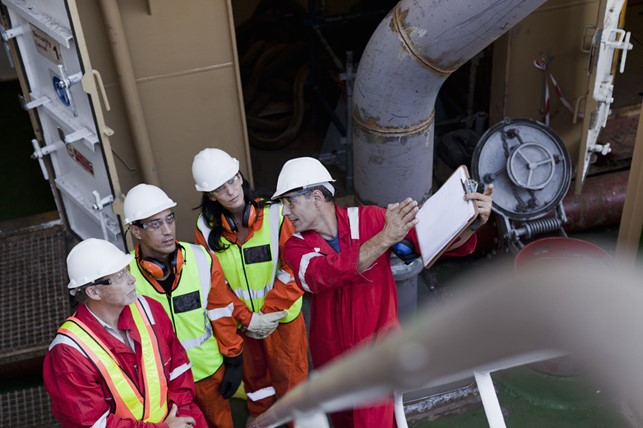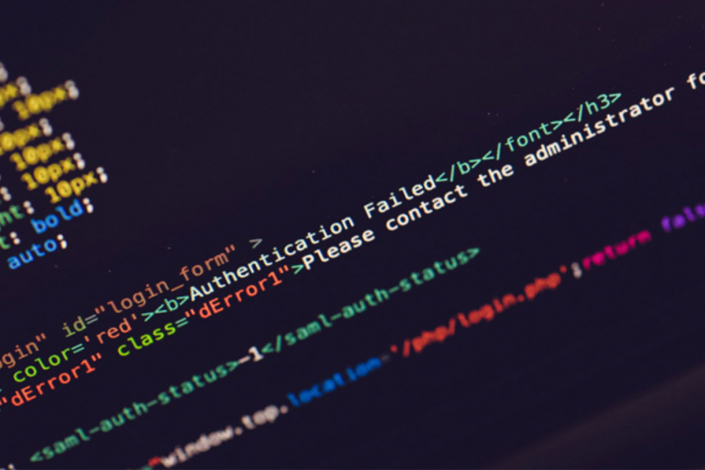 https://samtoa.de/wp-content/uploads/2024/06/JGR_KSP_Umgang-mit-Oracle-im-Java-Audit_Bild.jpg
330
643
Wolfgang Stratenwerth
https://samtoa.de/wp-content/uploads/2020/10/samtoa-license-experts-logo.svg
Wolfgang Stratenwerth2024-06-04 12:42:032024-06-04 14:22:04Beware of Oracle-Java-Audit: How to Prepare and Respond to Oracle’s Inquiries
https://samtoa.de/wp-content/uploads/2024/06/JGR_KSP_Umgang-mit-Oracle-im-Java-Audit_Bild.jpg
330
643
Wolfgang Stratenwerth
https://samtoa.de/wp-content/uploads/2020/10/samtoa-license-experts-logo.svg
Wolfgang Stratenwerth2024-06-04 12:42:032024-06-04 14:22:04Beware of Oracle-Java-Audit: How to Prepare and Respond to Oracle’s InquiriesThe first version of S/4HANA was released in February 2015. 23 years after the market launch of SAP R/3, SAP wants to equip itself and its customers for the future with a new generation of software. The name already indicates that the software can only run on the in-house HANA database. Other database manufacturers are not included.
The “S” in S/4HANA stands for Simple … everything should be easier ….
Since the announcement that SAP R/3 (SAP ECC) will no longer be developed and that maintenance will end in 2025, there has been a lot of confusion among SAP customers. How should the changeover to the new software be managed technically? “Greenfield”, “Brownfield”, “Bluefield” – if you listened to the analysts and strategy consultants, you would think it was a question of the right colour. As difficult as it is to replace SAP software with a competitor product, the transition to the new software generation is just as difficult. By February 2020, just 13,800 customers – out of over 380,000 – had signed an S/4 contract. Very few of them had already been able to switch off the old software.
What else was the goal? Everything was to become “S” as in simple …
SAP had no choice but to extend the end of maintenance for R/3 by two years, with the expensive Extended Support even until 2030.
WHAT WILL BECOME OF THE “OLD” SAP LICENCES
In addition to the technical challenges, many customers also wondered what would happen to the expensively purchased R/3 licences that had been under maintenance for years. SAP takes the view that S/4HANA is completely new software that would have to be relicensed. However, there was a clear risk that customers could then switch to a competitor.
“S” as in simple should also be the licence changeover …
THE PRODUCT CONVERSION
First, a new product was invented – “S/4HANA Enterprise Management for ERP Customers”. You will search in vain for a functional description. This package only exists on paper. Every existing SAP customer can purchase it to make their old licences usable for S/4HANA. That sounds really simple. A lucrative additional income for SAP: every customer who is still hesitating to contractually migrate to the S/4HANA world pays a one-off “small amount”. This allows them to continue working as before and try out individual products from the S/4HANA world. With 380,000 customers, this small amount quickly adds up to a three-digit million sum, on which annual maintenance is then also charged.
“S” as in simple has become money-making for SAP …
This package for existing customers is the basis of “Product Conversion”. All products that were purchased in the R/3 world and for which there was an equivalent in the S/4HANA world can be used in both worlds during the migration. This applies in particular to user licences. It is a great advantage for customers who were able to agree customised special users at favourable prices in the past. The name “Product Conversion” comes from the fact that products for which there is no equivalent in the new S/4 world can be converted into the respective successor product. In the simple S/4 world, however, “conversion” does not mean “exchange”, as one might be inclined to believe. No, the purchase price paid with all discounts is simply credited when the successor product is purchased. The discount for the successor product must be renegotiated. As a rule, the new product is significantly more expensive – after all, it is modern in-memory software.
Nevertheless, the “product conversion” is the bargaining chip for SAP customers in negotiations with SAP when it comes to the “contract conversion”.
THE CONTRACT CONVERSION
SAP’s goal with S/4HANA is to cut out all the old commercial habits. With contract consolidation based on the S/4HANA price and conditions list, all individual special rights with customers should be cancelled. If individual customers were barely able to keep track of the ancillary agreements made over the last 20 years, it was simply impossible for SAP to monitor this for hundreds of thousands of customers.
A “contract conversion” is intended to draw a line under the contract history. Every customer should use the SAP software on the basis of the same rights.
“S” as in simple, SAP should be able to monitor the use of its software and sell new products.
However, this goal of SAP also has advantages for existing customers. In negotiations about a “contract conversion”, I have seen that SAP was prepared to make concessions that were previously unthinkable.
How does SAP envisage a “contract conversion”?
The amount spent by the customer on SAP software that is currently still under maintenance is determined (note: third-party products purchased via SAP do not count). This amount, taking into account all discounts, is taken into account for the new purchase of products from the S/4HANA price list.
One advantage is that all products that are no longer used or are used to a lesser extent (“shelfware”) can also be taken into account for offsetting.
However, the amount credited may only account for 90% of the new purchase price. Shelfware can only be taken into account if additional SAP software is to be purchased anyway. Otherwise, it only leads to the procurement of new unnecessary products.
WHAT ARE THE CRITICAL POINTS OF A CONTRACT CONVERSION?
The customer must know which S/4 products they need to map their processes. Anyone who makes mistakes here will have to make additional purchases later and underestimate the costs when the contract is signed. SAP offers a number of tools here, such as the “SAP Transformation Navigator”. However, the new S/4 products are rarely equipped with the same range of functions as their predecessor products.
The new user types for named user licences only differentiate between 4 application scenarios: Developer Use, Professional Use, Functional Use and Productivity Use. Experience shows that a reallocation based on the functions used in the SAP system usually leads to a significant increase in costs. A precise analysis and simulation of the new licence mix is necessary. A blanket allocation of Employee and ESS users to Productivity Use, Professional users to Professional Use and the rest to Functional Use sounds simple (“S” as in simple), but usually leads to incorrect licences.
An integral part of the S/4 licence model is “Digital Access”. As soon as you have licensed this product, you agree that documents imported from non-SAP systems via interfaces are subject to a licence. Under German law, it is highly controversial whether SAP is entitled to charge an additional licence fee for this “indirect use”. For many SAP customers, this was and still is a reason not to carry out contract conversion. However, initial experience has shown that SAP is willing to enter into dialogue here too and is prepared to offer digital access as part of a contract conversion. It is essential to conclude agreements with SAP that deviate from the standard. If you overlook this, you are taking an incalculable financial risk for the future.
HOW SHOULD YOU OPTIMISE THE CONTRACT CHANGEOVER TO S/4HANA?
It is important not to allow yourself to be put under time pressure! Any discount that SAP announces for a limited period of time can also be negotiated at a later date. With Product Conversion, you have a low-risk opportunity to utilise S/4 products at a manageable cost. This gives you time to negotiate sensibly with SAP about the conditions under which a contract conversion is acceptable.
The inventory of existing licences (including shelfware) is then the first necessary step. All special agreements must also be listed. At the same time, the future use of the SAP software should be determined with the specialist departments (time horizon 3-5 years).
A precise analysis of the required user licences under an S/4 contract is essential. The user types are completely redefined – to the advantage of some customers, but often also to their disadvantage.
It is also necessary to carry out a detailed review of the SAP functions currently in use and to clarify which products will be used to map them in the new world. Pure product mapping falls short here.
The next step is to regulate all the things in the new contract that have led to problems in the past: no article numbers in the contracts, no comprehensible descriptions of the metrics and their technical measurement, no active notification when licences are no longer required, etc.
The S/4HANA product portfolio is still growing rapidly. The functionalities of the products are changing. It is not possible to plan which products will be needed in 5 years’ time. That’s why you should be granted extensive and long-term configuration rights. Otherwise you will end up with many products in the contract for which maintenance has to be paid, but which are not needed – or are needed to a lesser extent.
These points provide a good basis for negotiations. Whether all demands can be realised depends on many factors. With Product Conversion, however, every SAP customer has the opportunity to wait for a better time for the changeover.
S/4HANA CONVERSION SERVICES
Are you one of the hundreds of thousands of SAP customers who know that SAP R/3 will only be maintained until 2027 and are facing the challenge of transferring the value of your purchased SAP licences to the new world of S/4HANA? SAP basically offers existing customers two contract conversion options. Which one is better in your case can only be determined after a thorough analysis. Experience from many conversion projects shows that, in addition to the two basic models, many individual arrangements can be negotiated with SAP. Remember that by changing your contract, you are setting the course for your business relationship with SAP until 2040. This is how long support for S/4HANA is guaranteed.
S/4HANA Conversion Services included:
- SAP Entitlement Analysis Services
- Determine all relevant licence and contract data
- Identify special agreements
- SAP Usage Analysis Services
- Analyse measurement logs from the last 3 years
- Determine optimisation potential
- Identify unused products (“shelfware”)
- SAP Vision and Scope Services
- Determine the customer’s medium-term SAP strategy
- Determine the new S/4HANA product composition (“new bill of material”)
- Define the timeline for the migration to the new products
- SAP Negotiation Services
- Define negotiation objectives (costs, clauses, eliminate grey areas in the SAP licence terms)
- Define negotiation strategy
- Coaching during the negotiations
- Benefits
The contract conversion to S/4HANA is used to lay an optimal foundation for the continued use of SAP software
Future risks are avoided (e.g. indirect use)
Advantageous contractual conditions from the old contracts are utilised in the negotiations
Interested in our S/4HANA Conversion Services?
The Author
Wolfgang Stratenwerth
Managing Director and SAP-Licensing expert of SAMtoa GmbH




 COPYRIGHT Fotos auf Lager von Vecteezy - https://de.vecteezy.com/
COPYRIGHT Fotos auf Lager von Vecteezy - https://de.vecteezy.com/
































